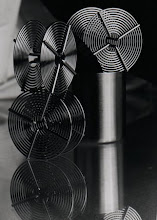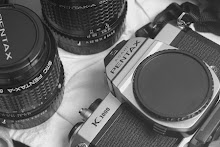Beer’s Law affects us in photography in many applications. It has to do with light lost as light travels through the elements of a lens. It can remind us to allow for light lost as light travels through a filter.
The intensity of a filter may affect the filter factor, or amount we have to increase exposure in order to generate an equivalent exposure value that would be comparable to our measurements taken without the filter. This enables us to stabilize exposure values while maintaining the contrast benefits provided by the filtration of light based on either local color or spectral sensitivity characteristics of a film. For example, if we were taking pictures of trees, we could use a green filter to emphasize the appearance of its green leaves. Or, if we were using infrared film, we could shoot through an infrared filter to block out all visible white light and permit only infrared light into the frame. Either way, when we let light through the filter, we would have to allow for the fact that as light travelled through the filter, some energy would be lost. To compensate for this loss, one of the most common solutions is to leave the shutter open longer; to ADD LIGHT; to move to a higher shutter speed. Or, conversely, open up the f/stop or change the entire computation base by falsely starting with a different ASA/ISO than we have actually loaded into the camera.
Beer’s Law, used effectively by engineers, enabled lens makers to build super-multi-coated lenses. What these lenses do is to use a permanent, internal dye coating on the lens elements themselves. These dyes are layered in a way that actually improves the efficiency of the transmission of the light through the lens elements. We do not often notice it today because this innovation became so common after its initial commercial use. These coatings are there, on the lenses, and they are usually doing a great job for us.
In negative processing and evaluation, Beer’s Law can show us that the film base itself will absorb some light; that film base will never be completely transparent, no matter how clear it looks to our eyes; and, the amount of light lost through the clearer portions (the film base plus fog) is a good reference point for measuring densities on the emulsion. In variable contrast printing, Beer’s Law can remind us to increase exposure as we send our light through a filter.
Beer’s Law can also help to explain to us why we cannot repeatedly contact print between media to transfer an image without some losses with each transfer. This can be seen most readily when making a paper negative from a paper positive.
Paper negatives are a relatively simple idea. They could be made directly from an image if common print paper was loaded into a camera, instead of film. The chemicals in a film’s emulsion and print paper’s emulsion are similar. They are so similar that oftentimes, if image quality was not important, the same chemicals that we use to develop film can be used to develop print paper.
Usually, we end up using one kind of developer for the film and another for the print paper. This is because the two different kinds of solutions have different kinds and balances of ingredients; but, you can develop a piece of print paper in a film developer. What I find usually happens when I do this is that the print paper’s image will seem very gray; film developers are “softer.”
Back to Beer’s Law and paper negative transfers. If we have a good print that we like, we can make a contact negative of that print using another sheet of print paper. To do this, working in a darkroom with a safelight, the procedure usually goes like this:
Place an unexposed sheet of print paper on the enlarger easel.
Place the processed, dry, print over it, face down. Get the emulsions of the two papers to touch.
Expose this stack of prints to light. It will take much more light than it took to make the original print. This is because of Beer’s Law.
When we send the light through the thickness of the original print to the new, paper negative print, we will lose some of the power of our light because that energy will be absorbed by the print paper. Also, Beer’s Law tells us that some of the light that we chine down on to the top of the stack of print paper will be reflected.
We would need to use much more light to make the second print, the paper negative, than the first because of Beer’s Law.







No comments:
Post a Comment